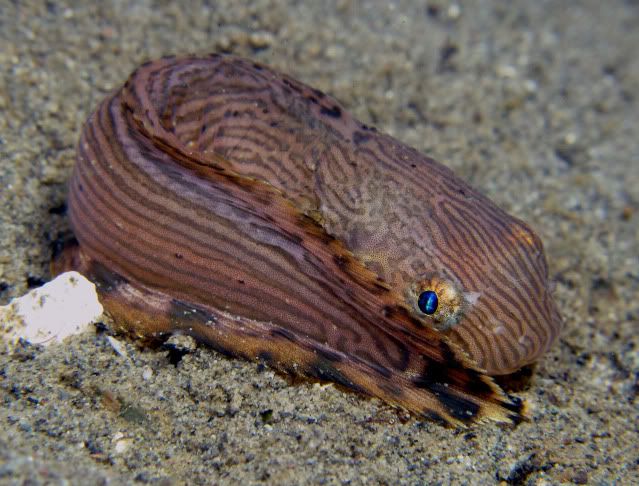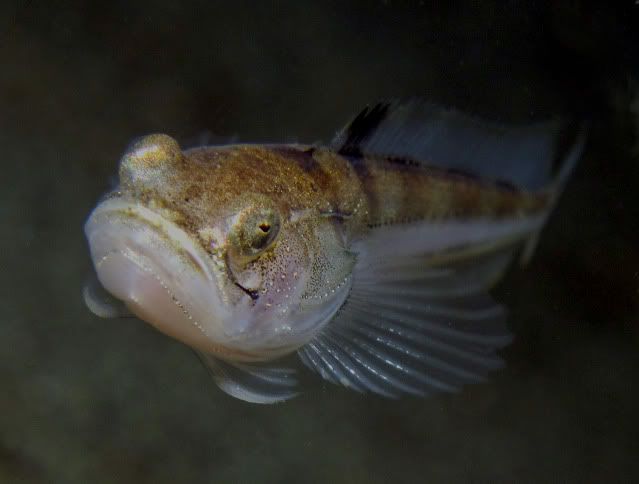Oh some might say that, but they'd be missing out. This time of year some of my favorite dives are 20 feet or less. The eelgrass beds are a nursery, and spending time there is pure theater. I bother with scuba gear because (a) the best time to be there is when it's dark ... that's when all the action happens, and (b) on a single LP95 I can stay there for a couple hours.
I can give you hundreds of reasons to bother ... I'll try to limit it to a few, though ... all of this was going on in between 7 and 20 feet ...
My only sighting ... ever ... of a Hudspeth Sapsucker nudibranch ... maybe three-quarters of an inch long, sitting on a piece of eelgrass ...
Schools of tubesnouts provide food for many species of creatures who come to the eelgrass beds for dinner ...
Snailfish seem to prefer the shallower depths, inhabiting the spaces between eelgrass beds ...
Several species of marine creatures lay their eggs in the eelgrass beds. Hatchlings, like this tiny plainfin midshipman, can only be seen there. This one's less than an inch long ...
... and this juvenile longfin sculpin isn't much larger ...
... and all those tiny fish attract larger fish ... like gunnels ...
... and my favorite little fish ... Pacific Spiny Lumpsuckers ... commonly found in the eelgrass beds between October and March ... this one's about two-thirds the size of a ping-pong ball ...
Despite the vivid colors on some of these creatures, the reality is that they blend in pretty well with their surroundings ... they have to if they want to live to become adults. Even at very shallow depths, the chances of finding them while freediving are much less than on scuba ... and without scuba the chances of staying down there long enough to get a good picture are not very good. For that reason, shallow eelgrass dives are becoming more and more popular here in winter.
Many divers get too focused on how deep they can go. Marine creatures, on the other hand, often prefer habitats that only grow in shallower waters. Those divers who visit these shallow habitats often discover a diversity of life that deeper waters just don't offer ...
... Bob (Grateful Diver)












